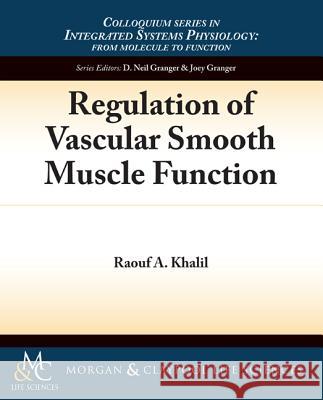Regulation of Vascular Smooth Muscle Function » książka
Regulation of Vascular Smooth Muscle Function
ISBN-13: 9781615041800 / Angielski / Miękka / 2010 / 62 str.
In book the role of Ca2+ and other signaling pathways of Vascular smooth muscle (VSM) contraction will be discussed. VSM contraction plays an important role in the regulation of vascular resistance and blood pressure, and its dysregulation may lead to vascular diseases such as hypertension and coronary artery disease. Under physiological conditions, agonist activation of VSM results in an initial phasic contraction followed by a tonic contraction. The initial agonist-induced contraction is generally believed to be due to Ca2+ release from the intracellular stores. Although VSM is unique in that it can sustain contraction with minimal energy expense, the mechanisms involved in the maintained VSM contraction are not clearly understood.
Vascular smooth muscle (VSM) constitutes most of the tunica media in blood vessels and plays an important role in the control of vascular tone. Ca2+ is a major regulator of VSM contraction and is strictly regulated by an intricate system of Ca2+ mobilization and Ca2+ homeostatic mechanisms. The interaction of a physiological agonist with its plasma membrane receptor stimulates the hydrolysis of membrane phospholipids and increases the generation of inositol 1,4,5-trisphosphate (IP3) and diacylglycerol (DAG). IP3 stimulates Ca2+ release from the intracellular stores in the sarcoplasmic reticulum. Agonists also stimulate Ca2+ influx from the extracellular space via voltage-gated, receptor-operated, and store-operated channels. Ca2+ homeostatic mechanisms tend to decrease the intracellular free Ca2+ concentration ([Ca2+]i) by activating Ca2+ extrusion via the plasmalemmal Ca2+ pump and the Na+/Ca2+ exchanger and the uptake of excess Ca2+ by the sarcoplasmic reticulum and possibly the mitochondria. A threshold increase in [Ca2+]i activates Ca2+-dependent myosin light chain (MLC) phosphorylation, stimulates actin-myosin interaction, and initiates VSM contraction. The agonist-induced maintained increase in DAG also activates specific protein kinase C (PKC) isoforms, which in turn cause phosphorylation of cytoplasmic substrates that increase the contractile myofilaments force sensitivity to Ca2+ and thereby enhance VSM contraction. Agonists could also activate Rho kinase (ROCK), leading to inhibition of MLC phosphatase and further enhancement of the myofilaments force sensitivity to Ca2+. The combined increases in [Ca2+]i, PKC and ROCK activity cause significant vasoconstriction and could also stimulate VSM hypertrophy and hyperplasia. The protracted and progressive activation of these processes could lead to pathological vascular remodeling and vascular disease.











